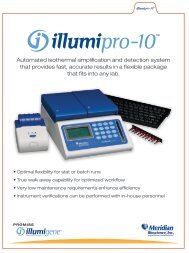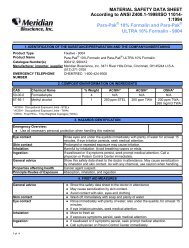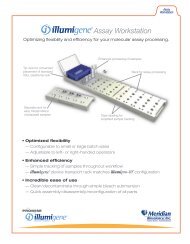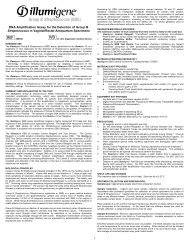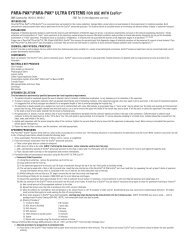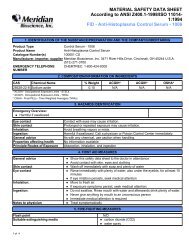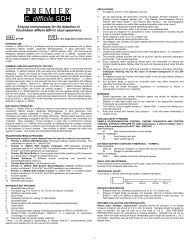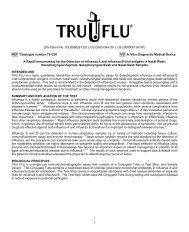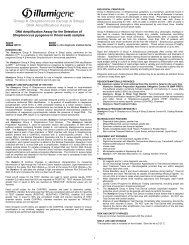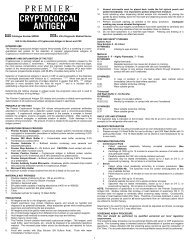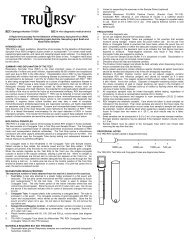Cryptococcal Antigen Latex Agglutination System (CALAS®)
Cryptococcal Antigen Latex Agglutination System (CALAS®)
Cryptococcal Antigen Latex Agglutination System (CALAS®)
You also want an ePaper? Increase the reach of your titles
YUMPU automatically turns print PDFs into web optimized ePapers that Google loves.
WARNING<br />
Because no test method can offer complete assurance that human T-lymphotrophic<br />
virus type I / II lymphadenopathy associated virus (HIV-I / II), hepatitis B virus, hepatitis<br />
C virus, or other infectious agents are absent, these controls should be handled by the<br />
Biosafety Level 2 as recommended for any potentially infectious human serum or blood<br />
specimen in the Centers for Disease Control/National Institutes of Health manual<br />
“Biosafety in Microbiological and Biomedical Laboratories”, 4 th Edition, 1999. Some<br />
reagents in this kit contain sodium azide. Disposal of reagents containing sodium<br />
azide into lead or copper plumbing can result in the formation of explosive metal<br />
azides. This can be avoided by flushing with a large volume of water during such<br />
disposal.<br />
RISK AND SAFETY PHRASES<br />
Negative Control, Pronase: HARMFUL – SODIUM AZIDE<br />
RISK PHRASES<br />
22 Harmful if swallowed<br />
32 Contact with acids liberates very toxic gas<br />
SHELF LIFE AND STORAGE<br />
Store the CALAS kit at 2-8 C. Reagents are preserved with 0.01% thimerosal or<br />
0.10% sodium azide; however, prolonged periods at room temperature should be<br />
avoided. <strong>Latex</strong> suspensions must not be frozen as this causes irreversible clumping.<br />
5



